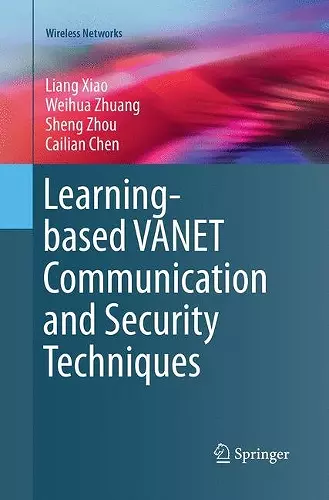Learning-based VANET Communication and Security Techniques
Weihua Zhuang author Liang Xiao author Sheng Zhou author Cailian Chen author
Format:Paperback
Publisher:Springer Nature Switzerland AG
Published:10th Dec '19
Currently unavailable, and unfortunately no date known when it will be back

This timely book provides broad coverage of vehicular ad-hoc network (VANET) issues, such as security, and network selection. Machine learning based methods are applied to solve these issues. This book also includes four rigorously refereed chapters from prominent international researchers working in this subject area. The material serves as a useful reference for researchers, graduate students, and practitioners seeking solutions to VANET communication and security related issues. This book will also help readers understand how to use machine learning to address the security and communication challenges in VANETs.
Vehicular ad-hoc networks (VANETs) support vehicle-to-vehicle communications and vehicle-to-infrastructure communications to improve the transmission security, help build unmanned-driving, and support booming applications of onboard units (OBUs). The high mobility of OBUs and the large-scale dynamic network with fixed roadside units (RSUs) make the VANET vulnerable to jamming.The anti-jamming communication of VANETs can be significantly improved by using unmanned aerial vehicles (UAVs) to relay the OBU message. UAVs help relay the OBU message to improve the signal-to-interference-plus-noise-ratio of the OBU signals, and thus reduce the bit-error-rate of the OBU message, especially if the serving RSUs are blocked by jammers and/or interference, which is also demonstrated in this book.
This book serves as a useful reference for researchers, graduate students, and practitioners seeking solutions to VANET communication and security related issues.
ISBN: 9783030131920
Dimensions: unknown
Weight: unknown
134 pages
Softcover Reprint of the Original 1st 2019 ed.